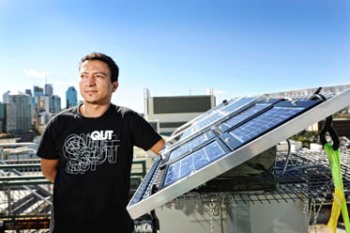The Queensland University of Technology’s (QUT) Gardens Point roof has been installed with a solar-powered nano sensor station. The station is a prototype for a network of sensors designed to monitor the environmental concentration of gases that are the major cause of air pollution and climate change.
 Solar-powered nano sensor station
Solar-powered nano sensor station
Ammonia, nitrogen dioxide and nitrous oxide are three environmental pollutants that are normally not studied as they are not found in high concentrations. Ammonia and nitrous oxide gases are emitted by manure and fertilizers and cause more pollution than carbon dioxide. Nitrogen dioxide is emitted from engines due to combustion.
Alexander Malaver, a systems master student at the QUT School of Engineering, announced that the project aimed to develop new, cost-effective sensors for the detection of polluting gases. This would allow real time monitoring of gas concentrations around farms and roads that would help to decide if they do affect humans or are the cause of global warming.
Third-generation solar cells power the new sensors used in the network. These cells are dye sensitized and work in the same way as plants do to capture solar energy. The solar cells work more efficiently under low light conditions. The gas sensors have been designed based on carbon nanotubes and metal oxide nanowires.
The network of solar-powered sensors is connected wirelessly, and individual nodes are designed to “talk” to other nodes. A central monitoring station receives the data read in real time, and computers on the QUT network have access to the data.